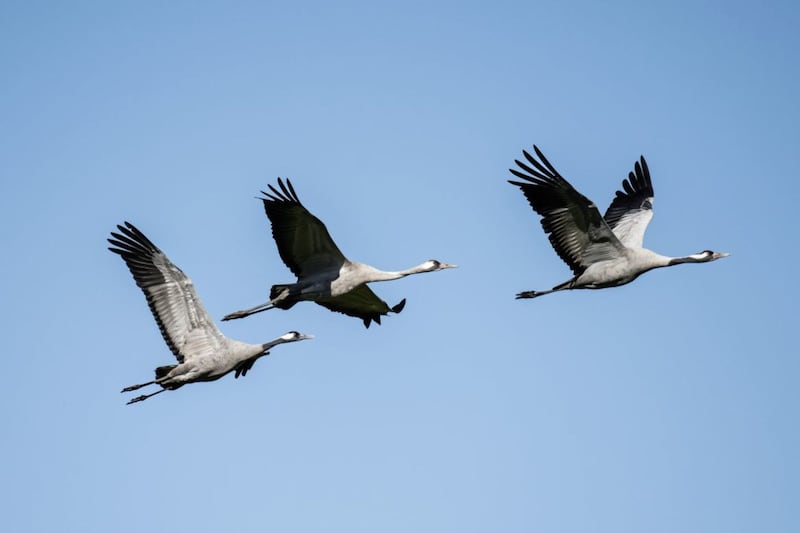LORCÁN Ó Tuathail is well known to many for his work as manager of the Golden Eagle Trust and, in particular, for his pioneering reintroduction programmes for the Golden Eagle, White-tailed Eagle and Red Kite in Ireland.
During the past eight years, he has also been indulging his passion for another long lost bird of Ireland, the Eurasian Crane, Grus grus, researching its relationship with our ancient ancestors and the possible influences it had on their early societies, work now published in his book Corr Scéal – Crane Notions.
In this substantial book, Ó Tuathail probes deeply into the archaeology, language and ancient cultural beliefs of our Atlantic islands in search of footprints left by this once common bird, footprints which point to the existence of a vibrant pre-Christian, animist and pacifist culture in which the ‘heavenly’ crane played a vital role.
The crane was a familiar part of the Irish and British avifauna up until the 16th century when it became extinct as a breeding species, probably through human persecution or an avian disease. A small flock of vagrant cranes, blown off course by severe weather, visited Ireland in 2011 when they turned up in Cork, dispersed to various wetlands and stayed most of the winter.
Ó Tuathail suggests that the interpretation of many Cor/Corr placenames throughout Ireland as references solely to local round hills is "not validated when GIS is used for toponymic verification’’ and that in many instances there is "little evidence to support the presence of a hill’’ at these sites.
He considers it more likely that Cor as a prefix is a pre-Gaelic name for the crane and its use in local places is associated more with wetlands and crane presence. This view is strengthened by evidence from early manuscripts showing that cranes were the third most common domestic pet in Brehon Law Ireland and also that crane bones are the fourth most common species of bird bone in Irish archaeological records.
Forensic examination of Cor-compound words in various languages by the author reveals strong cultural associations with cranes not just in Ireland but in Britain and throughout Europe. He also speculates that the Bronze Age fort of Dún Aonghasa on Inishmore, largest of the Aran Islands, may have been deliberately constructed under the well known migratory path of cranes and that locals lit fires at the site "to help migratory birds find safe passage’’ believing, perhaps, that they were carrying the souls of family members to heaven.
The name Aran itself, he thinks, could have originated from the word ‘Caran’ suggesting the ‘Holy sites of the crane’ or the ‘Stone circles of the crane’.
A recurring question which puzzles Ó Tuathail is why "advancing societies did not honestly document the crane system that preceded them". He wonders have "ancient words been rinsed and cleansed" and has "the Humanist weaponry of Logic, Ink and Fear, especially Fear" been used to suppress a successful animist belief system. He suggests that the willingness of St Colmcille (the Crane Cleric) "to blend pre-Christian holy ways with Early Christianity" may have been the reason for his expulsion from Ireland by an Irish Church synod.
A timely, thoroughly researched and most persuasive book, Corr Scéal challenges the orthodox view we have of our past and also asks that more academic rigour be applied in the task of revealing the truth of that cultural and linguistic past.
Perhaps Lorcán’s next job of work will be to cajole these magical cranes back to Ireland.
:: Corr Scéal: Crane Notions is available online from Kenny’s Bookshop (www.kennys.ie) and from bookshops in Letterkenny, priced £11.

